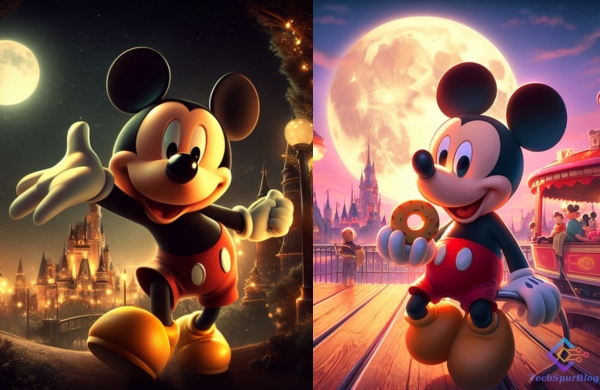
In an unexpected twist, Microsoft’s AI has taken Mickey Mouse into dark territories, prompting reflections on ethics and regulation in the digital age.
Technology has always promised us a future filled with possibilities and creativity. However, there are times when this promise leads us down unexpected and murky paths. A prime example of this is Microsoft’s new image generation feature in Bing, driven by artificial intelligence.
The initial idea behind this feature was simple and fun: to enable users to create images using artificial intelligence. Nevertheless, some users took a darker turn, generating images that placed our beloved Mickey Mouse in terrifying scenarios related to the September 11th attacks.
A Dark Twist for Mickey Mouse
Microsoft collaborated with OpenAI’s image generator, DALL-E 3, with hopes of providing a tool for users to explore their creativity. However, it appears that some decided to explore the dark side of this functionality, crafting images where Mickey Mouse is involved in the heinous acts of September 11th at the World Trade Center.
The scenario is as outlandish as it sounds, raising questions about the boundaries of technology and the responsibility of those who develop it.
Also Read: Getty Images Introduces AI-Powered Image Generator in Collaboration with Nvidia
Disney’s Deafening Silence
Disney, a company known for its strict protection of copyright, has opted for strategic silence on this controversial matter. While their response is understandable, it leaves a void of curiosity: What does Disney think about these grotesque representations generated by AI, featuring their beloved Mickey?
This silence also brings the discussion about copyright protection in the digital age to the forefront, especially when it involves artificial intelligence.
The Flimsy Security Barriers
The security barriers in Bing’s image creation feature seem rather fragile. While you cannot directly request images of Mickey committing violent acts, with a bit of “creativity” (and a large dose of impropriety), it is possible to associate Mickey with violent scenarios. The ease with which these security barriers can be bypassed highlights the need for more ethical and robust AI tools.
The Thorny Issue of Copyright
If Bing is capable of producing images of Mickey Mouse, is it using copyrighted data? Are we witnessing a large-scale copyright violation? Disney is not known for being lenient when it comes to the use of its intellectual property, adding an extra layer of complexity to the issue.
Mickey, SpongeBob, and Kirby: The Controversial Trio
Mickey is not alone in these grotesque AI-generated depictions. Images of SpongeBob and Kirby in September 11th scenarios have also emerged. What do Nickelodeon and Nintendo have to say about this? Similar to Disney, they have chosen silence.
The implications of these representations extend beyond mere internet controversy, raising serious questions about ethics and regulation in the AI era.
Also Read: Microsoft’s Assertive Marketing: The Push for Microsoft Edge Over Google Chrome
An Uncertain Future in the Age of AI
The door to legal discussions among giants like Disney, Microsoft, and OpenAI remains slightly ajar. The AI era poses new challenges in copyright protection, and incidents like these only scratch the surface of an issue that promises to unleash endless debates in the near future.
In a world where AI can create content from popular characters, copyright laws will be shaken. In the meantime, we can only wait and see how this narrative unfolds, with hope that common sense and ethics will prevail over malevolence and impropriety. Inany case, if we were all moderately sensible, we wouldn’t be having these debates, but human nature is full of surprises.

Leave a Reply